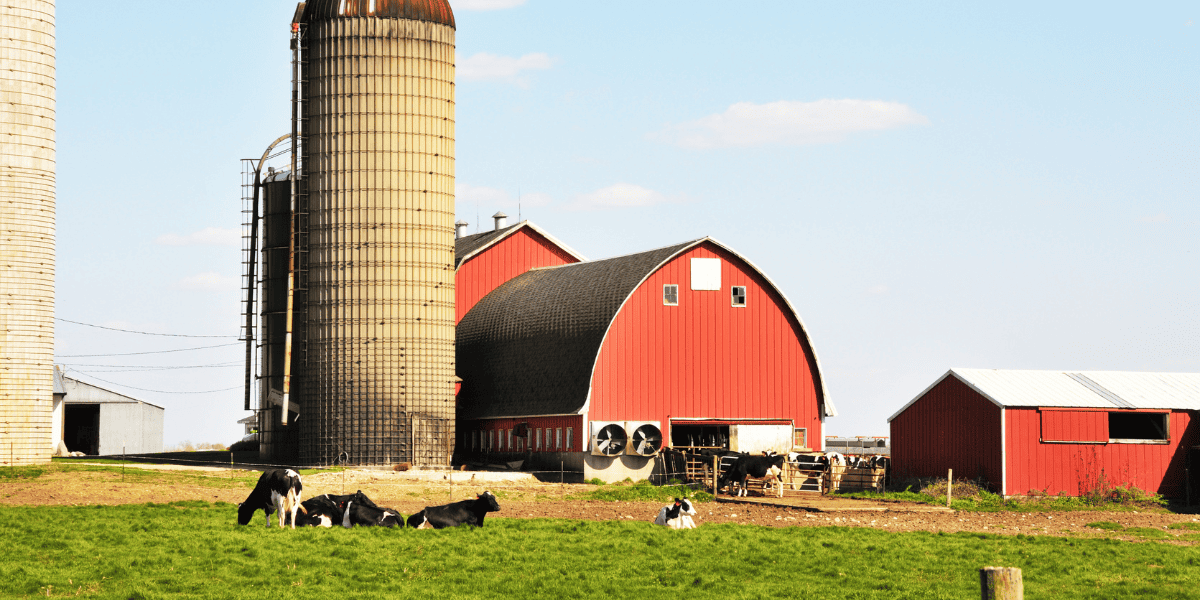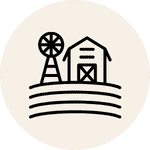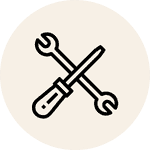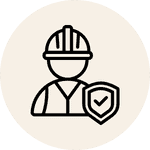
New Farmer Checklist
Starting a farm is exciting—but also overwhelming. From selecting the right land to putting safety plans in place, there’s a lot to juggle. Whether you’re taking over a family operation or starting fresh, this checklist breaks down the key steps every new farmer should take to build a strong and safe foundation.
Click here to download the New Farm Owner Checklist.
1. Define Your Farm’s Purpose

Before making any big decisions, take time to clearly define your goals:
- What will you produce? (Crops like corn or soybeans, livestock such as beef cattle or hogs, or specialty products like organic vegetables or cut flowers?)
- Who will your customers be? (Local farmers markets, regional wholesalers, direct-to-consumer CSA subscriptions?)
- Is this farm a full-time business or a supplemental income source?
Why this matters: Knowing your goals influences every decision that follows – from the land you buy to the equipment you invest in and the safety measures you prioritize.
2. Create a Business Plan

A solid business plan keeps your vision on track and helps secure financing.
Your farm business plan should include:
- Startup budget: Equipment, seed, livestock, structures
- Operating budget: Feed, fertilizer, repairs, utilities, labor
- Revenue projections: By crop, livestock cycle, or season
- Marketing strategy: How and where you’ll sell your products
- Risk management: Insurance coverage, contingency funds for disasters or price fluctuations
Why this matters: Farmers with clear business plans are better prepared for unexpected expenses and market changes.
3. Research and Choose the Right Land

Choosing land is one of the most important decisions you’ll make. Consider:
- Soil type and quality – Get a soil test from your local extension office.
- Water availability and rights – Check irrigation capacity or well water access.
- Drainage and erosion risks – Poor drainage can ruin crops or restrict livestock.
- Accessibility and infrastructure – Proximity to markets, road access, and utilities.
- Room for future expansion – Think about your 5-10 year growth plans.
Why this matters: The right land ensures productive yields and long-term farm viability.
4. Set Up Your Finances

Establish your financial systems early to keep business and personal funds separate.
Steps to take:
- Open a dedicated farm business bank account
- Connect with local ag lenders or USDA offices for funding options
- Get quotes for farm insurance (property, equipment, liability, livestock, crops)
Why this matters: Clean financial records and insurance coverage protect your farm and simplify taxes and loan applications.
5. Register Your Farm Business

Stay compliant by completing the proper registrations.
You may need:
- Tax ID (EIN) for your business
- State and federal farm registrations (check USDA or state ag websites)
- Sales tax permits if selling products directly to consumers
- Zoning approvals or agricultural exemptions for your land use
Why this matters: Proper registration avoids fines, enables financing, and qualifies you for farm programs and tax benefits.
6. Build Key Infrastructure

Your farm needs more than just land and crops.
Early infrastructure investments include:
- Equipment storage sheds or barns for machinery and supplies
- Fencing and watering systems if raising livestock
- Silos or grain bins for harvested crops
- Irrigation or well systems to maintain water supply
Why this matters: The right infrastructure keeps operations running smoothly and protects your assets from weather and theft.
7. Learn Your Equipment and Maintenance Routines

Familiarize yourself with your equipment before use.
Focus on:
- Safe operation – Review manuals, take operator training if available
- Seasonal maintenance routines – Prevent costly breakdowns
- Proper storage and cleaning – Extend lifespan and reduce hazards
Why this matters: Well-maintained equipment reduces downtime and keeps you and your workers safe.
8. Create an Emergency Action Plan (EAP)

Farms are high-risk environments. Equipment failures, fires, grain entrapments, and severe weather can happen fast – and your response needs to be just as quick.
An EAP covers:
- Contact information for first responders
- Evacuation and rescue procedures (especially for grain bins)
- Fire, weather, and medical emergency protocols
- Regular safety drills for you and your workers
Need help building your EAP? West Side Salvage offers custom Emergency Action Plan services tailored to your farm’s needs – so you’re ready before an emergency strikes.
Why this matters: A solid Emergency Action Plan could save lives and protect your livelihood.
9. Connect With Your Local Extension Office

Your local extension office is a free, underutilized resource. They can help with:
- Soil testing and interpretation
- Pest management guidance
- Livestock health resources
- Marketing and business planning support
Why this matters: Expert advice saves time, money, and frustration as you build your operation.
10. Build a Farm Safety Culture

If you hire workers—or even just get help from friends and family—make safety part of the daily routine.
- Host safety walkthroughs for new helpers
- Post signage on hazards (chemical, electrical, machinery)
- Use harnesses and lockout/tagout where appropriate
- Keep PPE and first aid kits on hand
Why this matters: Safety isn’t a one-time event. Revisit it every season.
Conclusion
Starting your farm off right isn’t just about productivity – it’s about safety, sustainability, and peace of mind. Use this checklist to stay organized and prepare for the unexpected. And remember, West Side Salvage is here to help with your Emergency Action Plan so you’re ready before an emergency strikes.
West Side Salvage provides comprehensive grain bin and silo services, including emergency response as well as routine maintenance and salvage services to keep your farm running safely and efficiently. With decades of experience and 24/7 availability, we’re here to protect your operation and your people when it matters most.